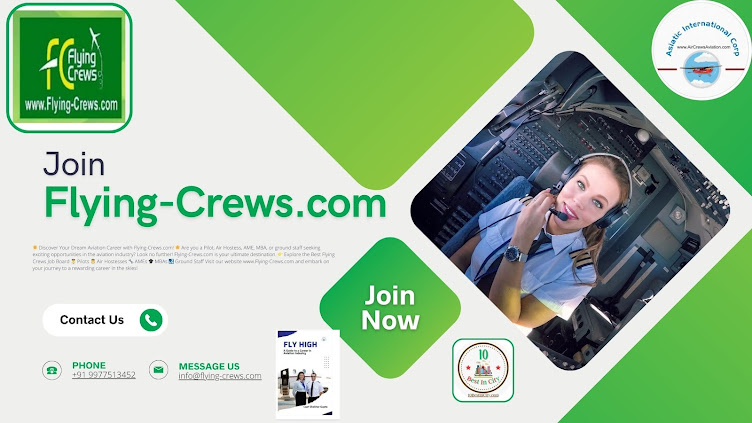The Pilot's Journey: From Dream to Reality
The Pilot's journey from dream to reality is an exciting and challenging path that requires dedication, hard work, and a passion for aviation. Here's a general overview of the steps involved in turning the dream of becoming a Pilot into a reality:
Set the Goal: The journey begins with a dream and a strong desire to become a Pilot. Setting a clear goal is crucial, as it provides a sense of direction and purpose.
Research and Gathering Information: Start by researching different paths to becoming a Pilot. Understand the various types of Pilot licenses, such as private Pilot license (PPL), commercial Pilot license (CPL), and airline transport Pilot license (ATPL). Explore different flight schools, training programs, and requirements.
Meet the Basic Requirements: Pilots must meet certain prerequisites, including age, educational qualifications, and medical fitness. Typically, the minimum age to start flight training is 16 years for a student Pilot certificate, and 18 years for a private Pilot license.
Choose a Flight School: Selecting the right flight school is critical. Look for accredited and reputable institutions that offer quality flight training programs. Consider factors such as cost, location, facilities, aircraft fleet, instructor qualifications, and student success rates.
Obtain a Medical Certificate: Pilots must pass a medical examination conducted by an aviation medical examiner (AME). The examination ensures that candidates are physically and mentally fit to fly.
Begin Flight Training: Flight training usually starts with ground school, where aspiring Pilots learn theoretical knowledge about aviation, aircraft systems, meteorology, navigation, regulations, and more. Simultaneously, practical flight lessons are conducted to develop flying skills.
Complete Required Flight Hours: The number of flight hours required varies depending on the type of Pilot license. For example, a private Pilot license typically requires a minimum of 40-50 flight hours, while a commercial Pilot license may require 150-250 hours.
Pass Written Exams: Throughout the training, Pilots must pass written exams to demonstrate their knowledge in various subjects. These exams are conducted by aviation authorities and cover topics such as aviation regulations, meteorology, navigation, and aerodynamics.
Solo Flight and Checkride: As training progresses, Pilots will undertake solo flights, where they fly without an instructor on board. They must also pass a practical test called a checkride, which includes a flight portion and an oral examination, to demonstrate their skills and knowledge.
Obtain Pilot License: After successfully completing all training requirements, passing exams, and meeting flight hours, Pilots can apply for their Pilot license. The type of license obtained will depend on the training undertaken and the level of certification desired.
Gain Experience and Ratings: Once licensed, Pilots often continue their journey by gaining flight experience, building flight hours, and pursuing additional ratings or endorsements. These may include instrument rating (IR), multi-engine rating (ME), or type ratings for specific aircraft.
Professional Development: Aspiring professional Pilots may aim for careers in commercial aviation, such as working for airlines, cargo operations, or charter companies. This may involve further training, job applications, interviews, and the acquisition of additional qualifications.
Remember, the journey to becoming a Pilot is not just about acquiring licenses and certifications. It's about continuously learning, improving skills, maintaining professionalism, and embracing a lifelong commitment to safety and aviation knowledge. With determination, perseverance, and a love for flying, the dream of becoming a Pilot can indeed become a reality.
The higher we soar, the smaller we appear to those who cannot fly.
The sky is not the limit; it's just the beginning.
Flying is learning how to throw yourself at the ground and miss.
The cockpit was my office. It was a place where I experienced many emotions and learned many lessons. It was a place of work, but also a keeper of dreams. It was a place of deadly serious encounters, yet there I discovered much about life.
The pilot who keeps his cool while others are losing theirs is the one who will master his craft.
A pilot lives in a world of perfection and balance. He wants to pull the clouds from the sky and spread them beneath his feet like a soft carpet. He wants to embrace the wind and fly like a bird. He wants to be one with the universe, dancing among the stars.
Flying is not just a passion, it's a way of life. It's the freedom to soar above the clouds and touch the sky, to leave all your worries behind and find peace in the embrace of the heavens.
Flying is more than a sport and more than a job; it's pure passion and desire, which fill a lifetime.
Pilots don't need wings to fly; they have dreams and determination.
Aviation is proof that given the will, we have the capacity to achieve the impossible.

.jpg)


No comments:
Post a Comment